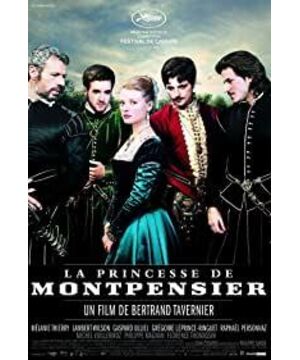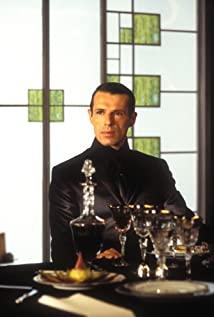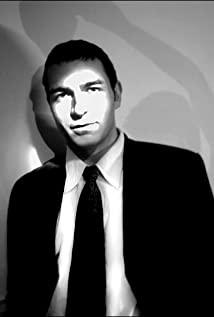I had heard of Mrs. Lafayette's deeds before, and I knew what kind of stories she wrote. With such a poster with a clear theme, I had a very confident prediction about the style of the film - so the beginning of the story. Leaving the boudoir and taking the battlefield was indeed unexpected. In particular, although the layout of this battlefield scene is not large, it was made with great care. It does not seem to be perfunctory, and there are also plots of slaughtering women and children that are rarely involved in costume dramas (most of the dark and distorted reflections of war exist in the era of World War I and later, then It was shrouded in the legendary halo of hero beauties before), compared with the original low expectations, it really raised my interest by a few notches.
The first half of the film did not live up to my expectations as a "Painting Scroll of the Private Life of French Nobles in the 16th Century". There is the hostility of the descendants of Capet to the "Ginger from Lorraine" Giz family, the hunting ground of 20 leagues that the two lords have fought for for 10 years, the marriage custom of "bringing candles and watching", and the wealthy heiress. Alluring dowries, rustic castles with ugly appearances, medical concepts that "disease flows with blood", superstitions that astrology contains political philosophies... and even eel farming and cooking ("feeding water and pork sauce") , raised in clear water on a stone bed, it will be fat in a month", "peeled, roasted until brown, coated with anchovy oil, rolled with bread crumbs, roasted for 10 seconds, dipped in olive oil, lemon, mustard, pepper The prepared juice is eaten”). We are familiar with the bowler hats, corsets, carriages, uniformed servants, balls, seders, theatre boxes of the 19th century nobles, but the 16th and 17th century aristocracy seems to belong only to the court - if not with the royal family When it comes to the relationship, they seem to be irrelevant; once you leave the capital, don't expect them to appear on your fief. So you can imagine how interesting and interesting the details of this film are in my opinion.
So far, I have turned to the idea that this film just wants to use the novel of Mrs. Lafayette as the framework to do an experiment of restoring the times, and there is only one problem left - how to deal with the relationship between the experiment and the main plot as the framework. , which in my opinion is not difficult to solve. However, when the film is more than halfway through and gets deeper and deeper into the main plot, I have to admit that this is its weakness. It finally fell into the rut of the love entanglement of four men and one woman, and it seems that there is no way to escape. The details of the period that so appealed to me in the first half are increasingly rare (court ballet, the Polish lessons of the Duke of Anjou, and the old Montpensier sequel are barely comparable, and the quality is not comparable to the first half), dog The blood was poured bucket after bucket without hesitation. Such a gap made me disappointed, and I couldn't help but have the urge to see the original to find out.
It's easy to find an English translation of the original, it's not too long, but it's hard to read - because it's so tedious. I consider myself to be quite considerate of ancient works, such as "The Tale of Genji", which makes me feel a little more elegant, but this novel is really lacking in my opinion. There is almost no dialogue, and the narrative method is like a running account; the author's greatest advantage lies in his understanding of the life of the aristocracy, but he does not know a word about the environment and customs; even its main theme - the struggle between love and responsibility, rationality and emotion (maybe Sigh, I originally liked this kind of subject) - all of them are extremely pale, since it has nothing to say about the inner portrayal of the characters, the whole psychological description is nothing more than "the lover is so cute that he/she can't help it" Just a pattern. I don't mean to belittle Madame Lafayette's talent, another of her more famous works, "Princess Clive" is good, but in all matters, "Princess Montpensier" is much more mediocre.
In this way, this film chooses such an original as a carrier, which can be called a difficult adaptation, and it is really not easy to have such results as the first half. You must know the reason why Chabanna betrayed the Protestant camp. The original work did not mention it at all. His friendship with the Prince of Montpensier, the Duke of Montpensier's instigation to the Marquis de Maizier, and the wedding process were all covered in one stroke. It is rich to such an extent that it not only conforms to the character's position but also subtly integrates the background of the times, which is actually quite a skill. However, when it comes to the main line of love, all these advantages are lost. It's just that the movie can't save this ill-advised story, and it's hard to comprehend that it makes it worse. For example, in the original work, Prince Montpensier was only a mere figure of a husband who had a weak sense of existence and appeared in the image of a husband who defended his honor. The first half of the film greatly enriched him, creating a sentimental, calm and rational person. In the image, he has a clear understanding of his wife's obedience to his father's order to marry, and the righteousness of his husband and wife is greater than the relationship between a man and a woman, and he accepts this situation very much; but the second half of the film suddenly smashes this image and replaces it with Hot-tempered, impulsive, paranoid, and dashing toward Bluebeard—his imprisoning the heroine wasn’t even in the original. If the plot just needs a hateful husband as a prop, why bother to promote it first and then suppress it? Another example, the heroine was originally betrothed to Ma Yan when she was young, and the affair with her fiancé's brother, Giz, was carefully hidden by both of them. Where is there a little bit of eroticism in the movie? What the heroine said to the Duke of Anjou, who she mistook for the Duke of Guise, was nothing more than a reminder to him to exercise restraint in the original work, but in the movie it became an invitation to a private meeting.
In the final analysis, the film is not willing to faithfully reproduce Madame Lafayette's ill-willed girl who succumbed to the temptation of lust and caused all kinds of misfortunes because of her weak will, and it may be difficult to cast her into the kind that did exist at the time and seems to modern audiences. The less clichéd lady, accustomed to love affairs and sensual pleasures, took the most foolish path of all—self-righteously shoving into the character some hints of independence, true love, and innocence. The tragic ending of the admonishing self-sufficiency is broken into a brave and affectionate woman who pursues happiness but is betrayed by a selfish and utilitarian man - it may be praised in the context of the 19th century, but the character is in the 16th century, and these ideas are related to her. It's ridiculously forward-thinking, and we 21st-century audiences have a hard time resonating with such clichés, so all of these attempts are smack dabs. This is very similar to another film I watched before, which was set in the English Civil War and also tried to bring out some critical reflections on the main line of the dog-blood love of many men and one woman (compared to focusing on the private lives of nobles) The detailed "Princess Montpensier" focuses more on the presentation of major events, and some scenes are indeed sincere, but they are still unavoidably dragged down by the bad main line), fortunately, "Princess Montpensier" is not in the aspect of hypocrisy and self-righteousness. go that far. But unlike the original script of "The Devil's Whore", "The Princess of Montpensier" is an adaptation. If you dismiss Madame Lafayette's moral advice, at least come up with something more serious and more serious. If something of value comes, why sell some cheap slogans that have no foothold in the background of the era in the original skin?
Of course, Madame Lafayette was only in the 17th century and described the scene more than 100 years ago with legends and imaginations, and more of it used ancient metaphors to relieve her own sadness. Her novel does not reflect too much history. Value, and writing skills are also very rough. But is choosing this carrier doomed to fail? I don't think so. In my opinion, if there is any room for this work to be developed, firstly, its background provides space for the experiment of "reduction of the times", and secondly, it has not been well received by Mrs. Lafayette. A good theme to express - "The battle between love and responsibility, reason and emotion". As far as the first point is concerned, the first half of the film is done well enough, and the second half is not without further opportunities - such as the ballet scene, if not just stop at the backstage, but let the camera focus on the dancer and the woman who is anxiously waiting for her lover. Switching between the protagonists can not only increase the drama, but also take the opportunity to do a display of ancient dances. As far as the second point is concerned, there are actually many techniques that a film can use: acting, composition, lighting, shots, editing, soundtrack... If the second half of the script is not so out of control, even if the script is already so, the actors (especially The heroine)'s acting could be a little better, at least it could have been more convincing than the flimsy words of the original. Sadly, these are only hypotheses.
View more about The Princess of Montpensier reviews











